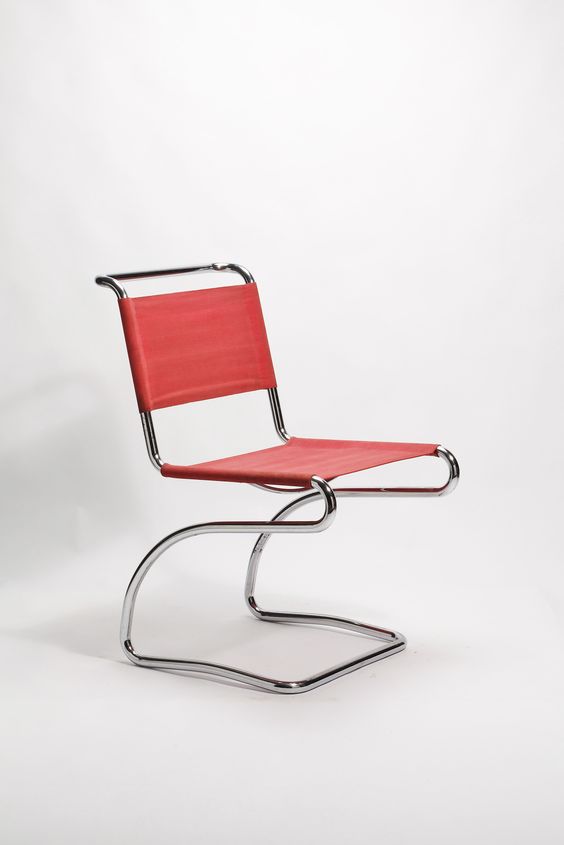This is an extremely rare version similar to the model A 745 F chair first made by Thonet in the 1920’s and later by Bernkop, EMEFES and Tatra who also continued the production after Second World War.
Poster promoting Tatra furniture from 1939
After contacting directly design experts at Thonet and Jiri Uhlir (the leading expert on Thonet in the Czech Republic) as well as our own extensive research, it is still a mystery whether this is an early model, a prototype or an alternative version to the commonly known model A 745.
It is documented that this type of chair was first made in the 1920’s, and is believed to have been produced exclusively for the world renown shoe producer Bata Company in Zlin in Czechoslovakia. Bata was a modern Company in many aspects way ahead of its time with its Modernist factories built in an avant- garde urban plan where people work in the factories and live in their own houses spread all around.
Students seating on the A 745 F chairs at Bata Boarding school in Zlin in the 1940’s
However, It’s stands strikingly apart from the rest of Thonet’s more commonly known design of more decorative and organic forms up to that time. It is markedly different to Thonet’s famous trademark bentwood production in it’s cubist masculine form. There is definitely a shift in the 1920’s Thonet production to modern minimalistic design but there isn’t a second chair similar to this one.
Thonet A 745 F chair in company’s 1920’s catalogue
We’re even more excited to present this particular chair, as the design of this piece is even rarer than the A745.
This particular chair is different in size, in it’s detailing and in some construction techniques.
First of all it is far larger in size overall, it’s backrest is broader, the backrest has a curved profile and is held by a single screw and a wooden frame on either side. As well as all of these differences, the legs are supported independently from the seating unlike the additional support that can be seen on later versions produced by Tatra and Bernkop.
Another significant and sobering detail about the history of this chair is the small German Eagle and swastika mark that can be seen on the underside of the seat. If this owner’s mark wasn’t scary enough, there are two words engraved; ‘Sich.Pol’ which means Sicherheitspolizei also known as Sipo. This was an elite unit of Nazi Secret Police the predecessor of ghastly Gestapo.
‘Sich.Pol’ short cut for Sicherheitspolizei and Swastika burned to the underneath of the seat
Head of Gestapo Mr. Wilczik (in front) together with other German officers looking down at site of the Bata factories during the German occupation of Zlin







































